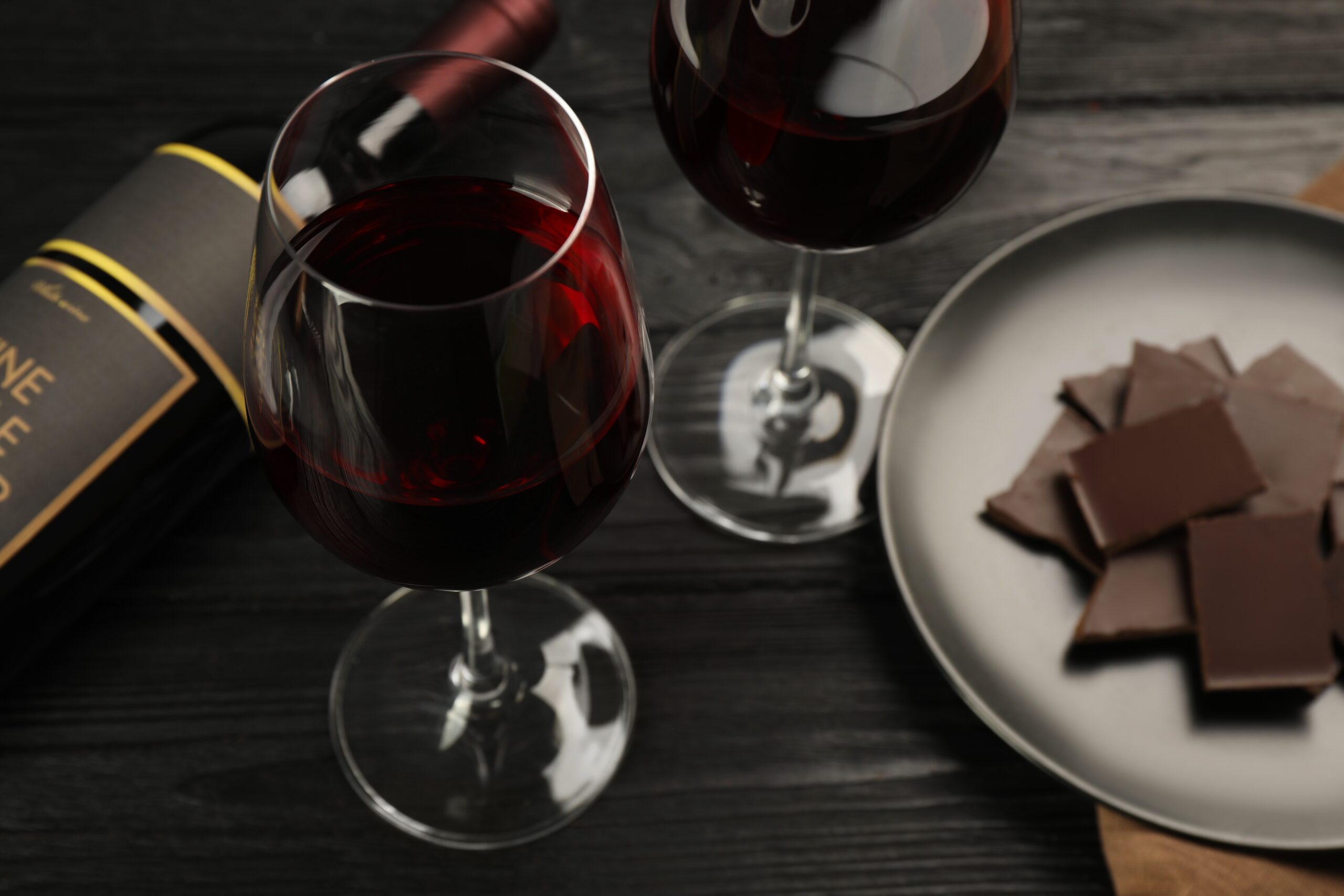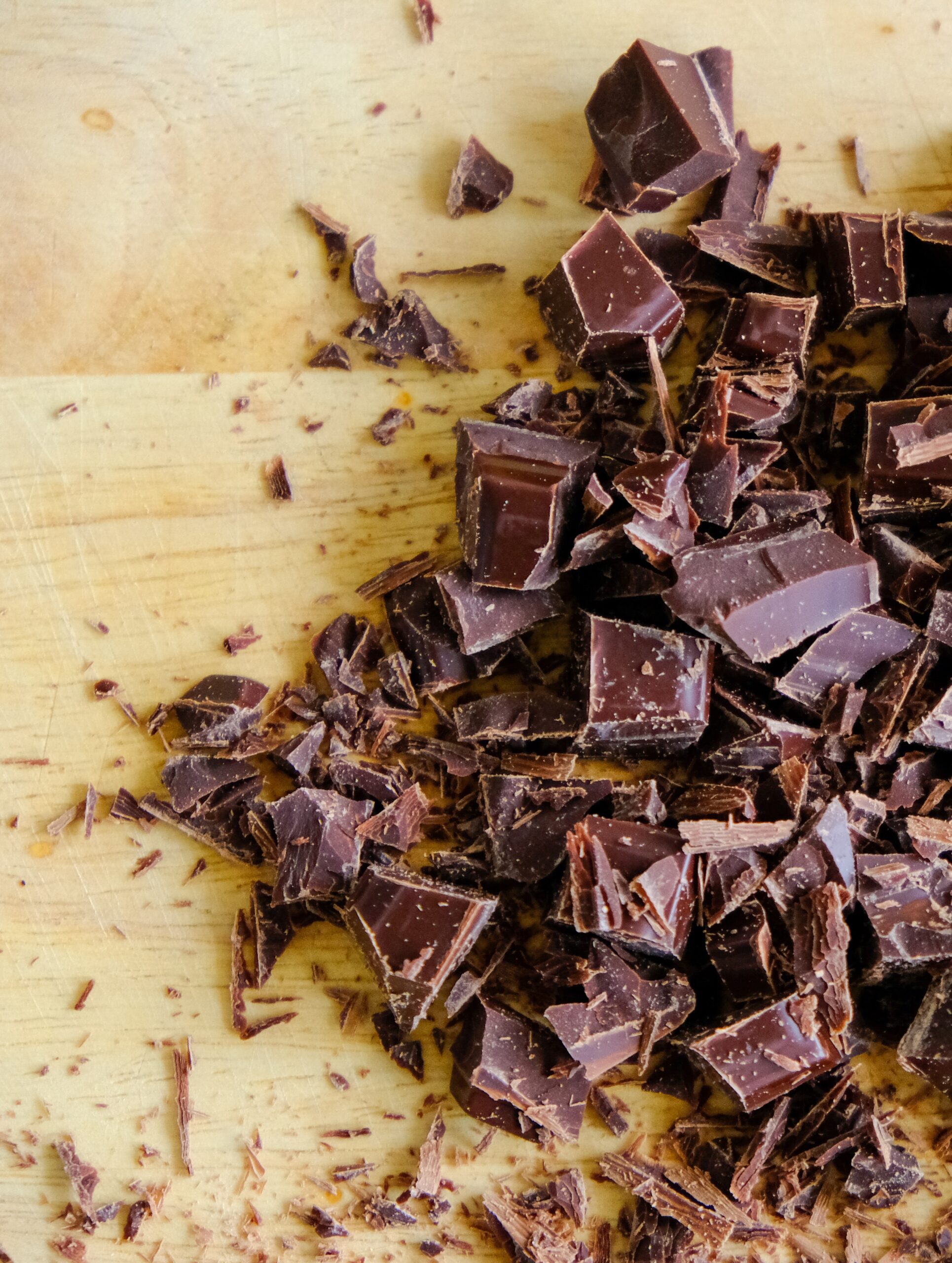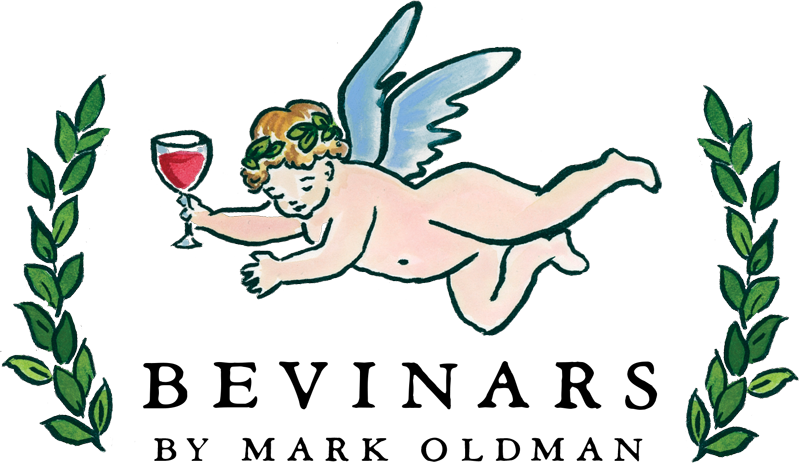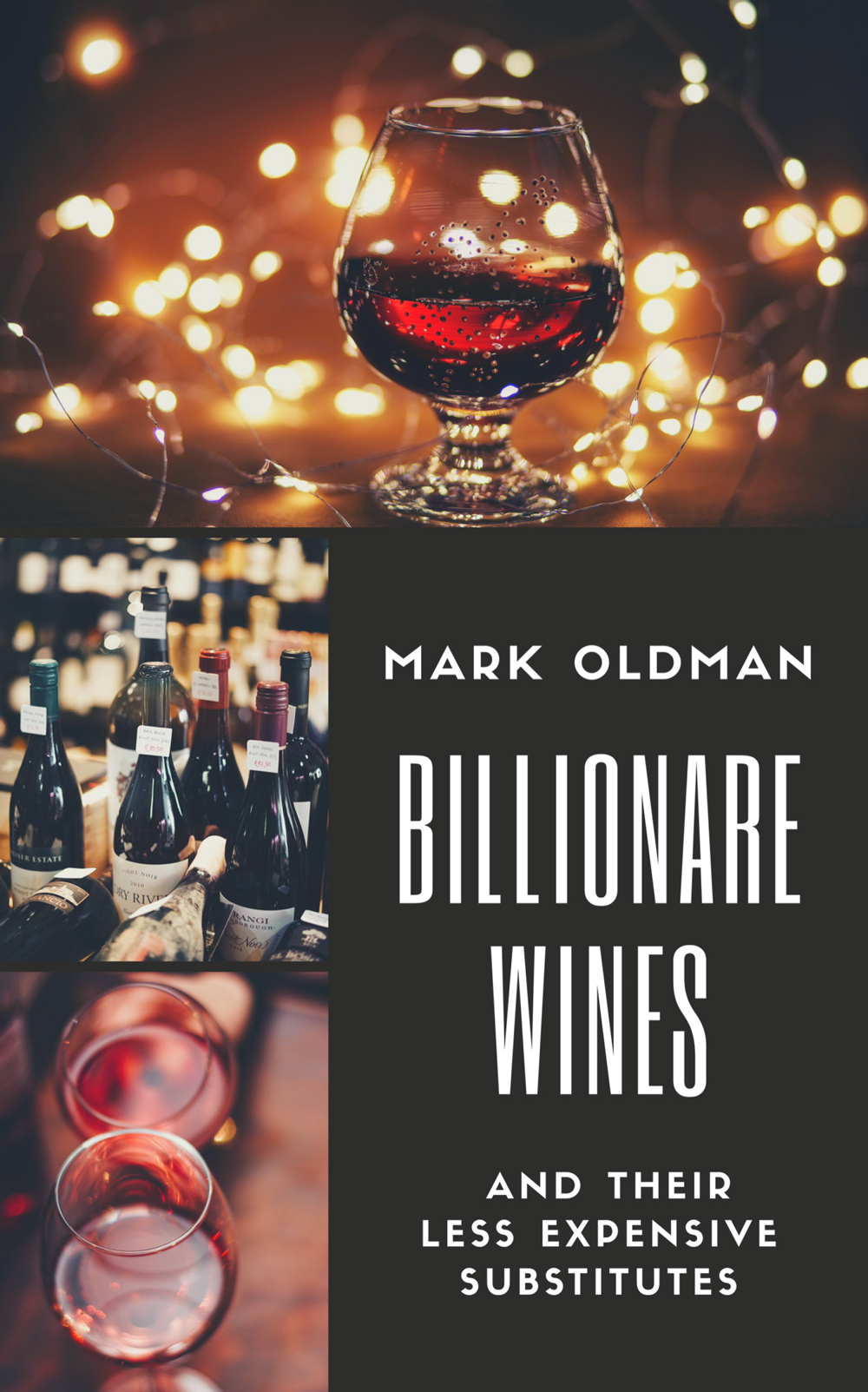Little-known Nuggets about Wine and Chocolate

It started in the early 1980s, quietly: the idea of pairing wine with chocolate. In 1982, one regional lifestyle magazine referred to how the “rather stultified conventional wine wisdom has it that chocolate ‘coats’ the palate, thus muting the subtleties of the wine.” But the gastronomic revolution had commenced.
The article went on to declare that “a number of wines go so well with chocolate” that it made for a must-do pairing. By 1986, a restaurant business magazine featured an interview with sommelier Evan Goldstein, who, although he said, “chocolate is the hardest to match with wine,” recommended a “late harvest Zinfandel because of the wine’s unctuous, port-like nature.” Things have changed, including the need for a late harvest Zinfandel.
Today, search for wine and chocolate on Google and the search will return over 44 million results.
While clearly the same advice can hold true for chocolate-based desserts, the truest pairing is with chocolate itself, as pure as possible. Something primordial is evoked by tasting two creations of natural fermentation at the same time. There is a certain success of harmony between these two great worldly pleasures.
So let’s review a few nuggets of wisdom regarding this dynamic duo.

Considering Chocolate and Wine
• For wine and chocolate to get along well in a meeting, the chocolate must be made with cocoa. That’s how simple the starting principle is. However, when “chocolate is not chocolate” (which happens most of the time when we think we are eating “chocolate”), cocoa, the body and soul of real chocolate, is largely replaced by sugar and dairy derivatives. “White chocolate,” for example, contains not even a scrap of cocoa. It is pure cocoa butter, sugar, and vanilla (so think Chardonnay if you have a white chocolate fetish). Therefore, with supermarket check-out line chocolate, instead of having a pleasant experience in harmony with wine, you may experience the pasty sensation described in the 1982 magazine article. Remember, next time you have “chocolate” in your hands, turn the wrapper over and carefully read the list of ingredients. If sugar is the first on the list, then what seems like chocolate really isn’t.
• What are we talking about, then, when we talk about chocolate? The product made with cacao or true cocoa, the fruit of the Theobroma Cacao tree (“food of the gods”), which grows in tropical regions, between 20º latitude south and 20º latitude north of the equator. Cacao trees needs a constant temperature between 21ºC and 25ºC and a relative humidity of 70% to produce quality fruit. Ecuador and Venezuela both produce excellent cocoa.
• Cocoa comes from the dried and/or roasted seeds of the Theobroma cacao tree. These dried ‘beans’ are ground to obtain pure cocoa powder. Pure cocoa is extremely bitter and has significant health benefits because, like red wine, it boasts antioxidants. This cocoa is (or should be) the primary ingredient that constitutes what we call chocolate; therefore, the higher the percentage of cocoa, and the fewer other ingredients (sugar, fats, dairy, etc.), the better and healthier the chocolate will be.
• Quality products indicate on the front label the percentage of cocoa contained in that chocolate. A higher concentration of cocoa will produce a more bitter product, while lower percentages of cocoa (and a higher presence of sugar and dairy derivatives) will provide an increasingly sweeter sensation in the mouth. Because both cocoa and red wine have a detectable concentration of tannins in their makeup, planning a successful red wine pairing must take into account the three basic aspects that make up chocolate.
• These are: first, cocoa, or specifically cocoa paste, which gives the flavor and aroma to the chocolate. The higher the proportion of cocoa in a chocolate, the more bitter it will be, with a darker color and a more intense flavor. Second, cocoa butter, or oil from the cocoa bean, is what provides the fat (a bit like butter, but with a slightly higher melting point). So, the higher the proportion of cocoa butter, the more the chocolate will feel creamy and smooth on your palate. Finally, sugar (chocolate can have sugar, but it should never be its main ingredient!) is what provides the sweetness. Thus, the higher the proportion of sugar, the sweeter the chocolate will be.
Pairing Chocolate with Wine
• A classic pairing of chocolate and wine is dark chocolate (look for more than 80% cocoa) with a glass of Port or Spanish PX (Pedro-Ximenez). Fortified wines (and sweet) with dark chocolate are a guaranteed passport to enjoyment! For those who love of pairings by culinary contrasts, this proposal balances the presence of sugar in the wine with the bitterness of the chocolate. At the same time, the mouthfeel of chocolate – which may leave a film on the palate – is balanced by the alcohol in the wine. In this way, both are present, and nothing is blurred. Keep in mind, this pairing is for those who prefer powerful sensations on the palate.
• To create a pairing featuring the aroma of both the chocolate and the wine as a primary focus, think of wines with fruity, toasty, or spicy notes that appear both in the nose and in the aftertaste of chocolate and wine. Experiment. According to your preferences, a harmonious or contrasting pairing can be created with red wines.
• Another very important factor to consider is the acidity of chocolate and wine. Generally, people feel the acidity of the wine more than that of the chocolate, but if we pair a chocolate with higher acidity to a wine characterized by acidity, the result will be a slight puckery sensation. For those who enjoy this type of sensation, it will be glorious.
• For others, it is better to think about balancing the acidity with sweetness (either from the wine or the chocolate) for a less dizzying and more harmonious sensation on the palate.
• Critical to pairing chocolate with wine is whether the chocolate has any type of filling. That small but significant detail can change the game when pairing. We can have fruity fillings that bring a lot of acidity, and other sweet fillings that can become cloying with wine. The ideal? That the sweetness of the wine is equal to or greater than that of the chocolate so that any bitterness is not accentuated.
Beyond that, tastes vary. Sparkling wines will always enhance the creaminess and inherent flavors of chocolate. Syrupy sweet wines like PX are infallible with semi-dark or bitter, dark chocolate (say around 90-99% cocoa). Some wineries and chocolate stores now feature this pairing. Baldacci Family Vineyards in Napa offers a one-hour Wine & Chocolate Tasting, using a sparkling wine, Carneros Chardonnay, Carneros Elizabeth Pinot Noir, and their Fraternity Red Wine Blend. Julian Wine & Chocolate is a wine bar & tasting room dedicated to promoting San Diego County’s higher elevation vineyards. Their chocolate tasting uses both locally made chocolate and these local wines.



